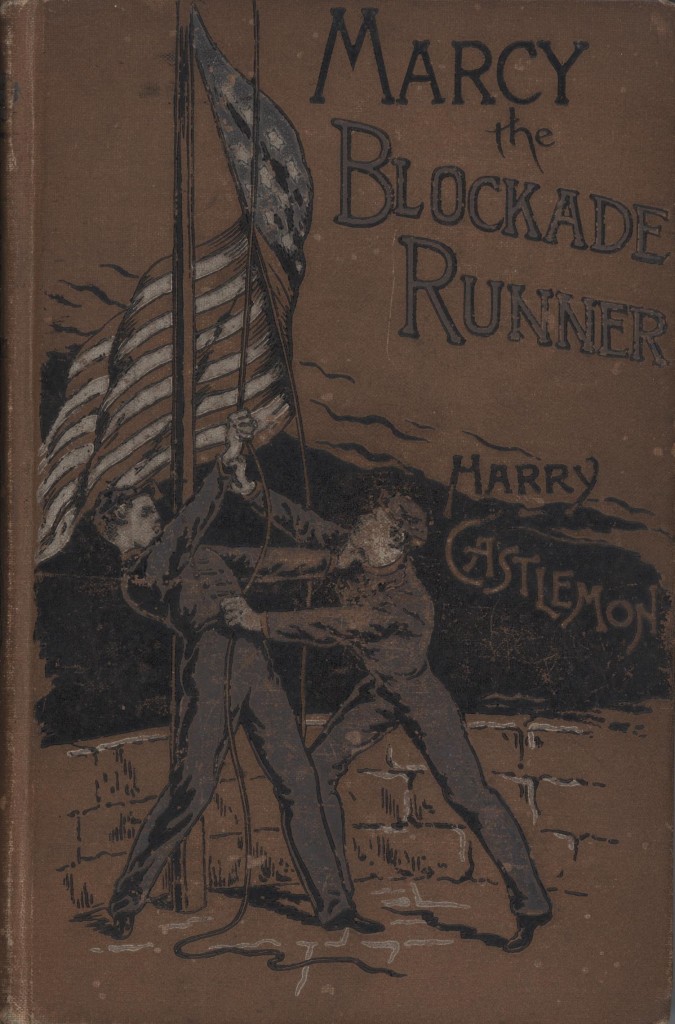Editor’s note: In this week’s recommended reading for “fiction published before 1900,” AAS member and Councilor Chuck Arning, park ranger and AV specialist at the Blackstone River Valley National Heritage Corridor, talks about a nineteenth-century book that was passed down through his family. Unlike all of the other books in this series (see Philip Gura’s and Jackie Penny’s), however, AAS does not own a copy…yet. As we like to say, “If we don’t have it, we want it!”

What books find their way into one’s personal library, particularly books published prior to 1900, is often the result of pure chance, a family connection or curiosity. Most likely, such longevity is the result of a combination of these factors.
The book that has managed to remain intact from the past in my library is Harry Castlemon’s juvenile action adventure Marcy, the Blockade Runner (Castlemon’s War Series, published by Porter & Coates, Philadelphia, 1891). Set in the coastal area of North Carolina during the Civil War, a family headed by a Union-sympathizing widow that owns a plantation fights off cruel southern traders who have designs on the Gray plantation.There is a strong African-American character who is seeking his own path to freedom. Marcy, a talented coastal boat pilot, is a pure Union man, but must conceal his true feelings. His older brother, Jack, has secretly left the South and joined the Union Navy. Marcy’s adventures revolve around his need to conceal his Union feelings and protect his mother, all while guiding blockade runners through the coastal waters of North Carolina. The reader must be warned that the language is reflective of the nineteenth-century view of African-Americans and is necessary to some degree for the plot development, but is distasteful to the twenty-first-century ear.

I was very pleased to read Mr. Arning’s comments on MARCY, THE BLOCKADE RUNNER. The reason one can’t find it in the AAS collection of course is that it was published post-1877. However it is a capital book. There are six volumes in this “War Series” and I read them all years ago. But now I am intrigued to reread them. I have read some Castlemon novels recently and they are pretty fine. He was known as “The Boys’ Own Author.” William T. Adams, better known as “Oliver Optic” and something of Castlemon’s older contemporary, also wrote some Civil War novels for boys and I will institute a recommended reading list shortly. Optic’s war tales straddle 1877; there were six from the 1860s and twelve from the 1890s. Thank-you Mr. Arning for reminding me of pleasant reading hours.